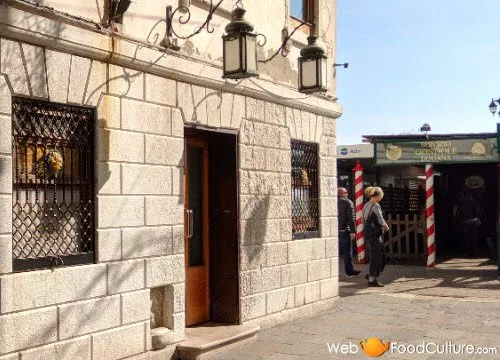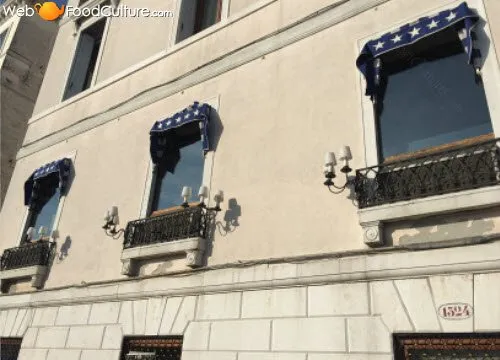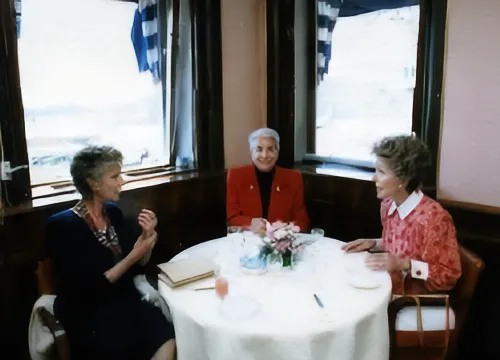Published:
Author: Antonio Maria Guerra
Harry's Bar Venice
HISTORY, INFO, PLACES, INTERESTING FACTS

Harry’s Bar Venice is a fascinating place, rightly part of the collective imagination. Over the years, thanks to its customers and their stories, this bar has developed a soul of its own. Two delicious specialties have been invented within its walls: ‘Bellini’ and ‘Carpaccio’.

The history of Harry’s Bar Venice.
There is no doubt that Harry’s Bar is a very special place, starting with the events that led to its birth: events that, if they hadn’t happened, would be worthy to be part of a small fable.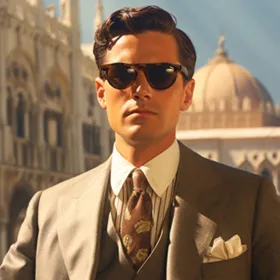 It was the year 1928, the Veronese Giuseppe Cipriani was employed as a barman in Venice, at the Hotel Europa and Britannia. Among his most loyal customers, Harry Pickering, scion of a wealthy Boston family: he was spending some time in Venice with his aunt. It was probably a dispute with her that deprived him of all the money, including that needed to pay the hotel and return home. Mr. Giuseppe, understanding the difficult situation of the boy, decided to help by lending him 10.000 lire. He showed most unusual confidence, since at the time this was a considerable amount of money, especially for the finances of a barman.
It was the year 1928, the Veronese Giuseppe Cipriani was employed as a barman in Venice, at the Hotel Europa and Britannia. Among his most loyal customers, Harry Pickering, scion of a wealthy Boston family: he was spending some time in Venice with his aunt. It was probably a dispute with her that deprived him of all the money, including that needed to pay the hotel and return home. Mr. Giuseppe, understanding the difficult situation of the boy, decided to help by lending him 10.000 lire. He showed most unusual confidence, since at the time this was a considerable amount of money, especially for the finances of a barman.
His trust was repaid a couple of years later, when Harry returned and gave him back the entire sum, 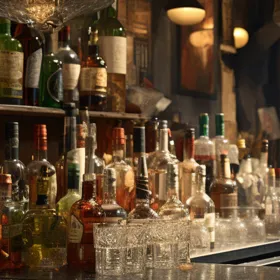
adding to it 30.000 lire out of gratitude. Blessed money, used by Mr.Cipriani to realize his dream.
Harry’s Bar was inaugurated on 13 May 1931: not surprisingly, it took the name of its benefactor. The idea that inspired this business was to create a ‘neutral’ place, where guests from all the most important hotels in the city could meet, enjoying a friendly and relaxed atmosphere. An idea that quite soon achieved great success, as the history of the bar clearly proves.
Harry's Bar Venice: location.
Venice, the homeland of Frittelle, is located in the Italian Region of Veneto. Its foundation dates back to 421 AD, as testified by the archaeological excavations at Riva Alta (the current Rialto area).

“TREAT PEOPLE LIKE KINGS AND KINGS LIKE PEOPLE”
(Arrigo Cipriani)

Cipriani and the ‘trattoria’ spirit.
Although many believe, probably because of the name, that Harry’s Bar is a bar, this is only partially true: it’s in fact primarily a restaurant.
Read more
A very particular restaurant, that’s for sure: as already mentioned in another paragraph of this article, its owners have managed to merge elegance, refinement and what can be called the ‘spirit of the trattoria’.
The ‘trattoria’ is the place that Arrigo Cipriani, contrasting the current trend, appreciates most because of its virtues: the captivating simplicity, the quality of food and the kind of freedom that customers can enjoy.
In every good trattoria, the one who leads the kitchen is not a ‘chef’, but a ‘cook’: a serious professional who, taking distance from ‘theatrical gastronomy’ and from any narcissistic ambition, is mainly concerned with the essence of his work. As Mr. Arrigo says, “it’s a matter of doing things right”.

Harry's Bar Venice: enjoying a very special ‘room’.
Giuseppe Cirpiani decided that, from its opening, Harry’s Bar should have a ‘discreet’ personality, avoiding, if possible, passing customers (*1). This choice, in addition to being imposed by the limited space available, responded to his desire to create a relationship with the guests. The fact that at the time of the inauguration, which took place in 1931, the bar was at the end of a closed road (*2), just in front of the Grand Canal, facilitated this particular decision.
Creating from scratch a place that, by its very nature, could attract a certain type of customers and gain their loyalty, was not an easy task. It was necessary to make sure that these people, while being in a public place, could enjoy an atmosphere at the same time elegant and familiar. Even if these characteristics are almost antithetical, Giuseppe Cipriani managed to successfully combine them.
Intriguing persons, often characterized by talent and wealth, have spent important moments of their existence within the walls of Harry’s Bar, leaving an impalpable and yet indelible sign of their passage.
It’s therefore no coincidence that Arrigo Cipriani, who took over the business in the 1950s, has nicknamed such a special place, ‘the room’ (‘la stanza’), recognizing to it a sort of ‘soul’.
Mr. Arrigo, following the path traced by his father, is the living symbol of a certain way of working: a ‘modus operandi’ that, refusing deceptive appearance, blends professionalism, attention to detail and a type of affability carried out with polite discretion.
Notes:
*1: A kind of clientele that has always made the fortune of many Venetian business activities;
*2: Nowadays, a bridge connects Harry’s Bar to ‘Riva degli Schiavoni’ and ‘Piazza San Marco’;
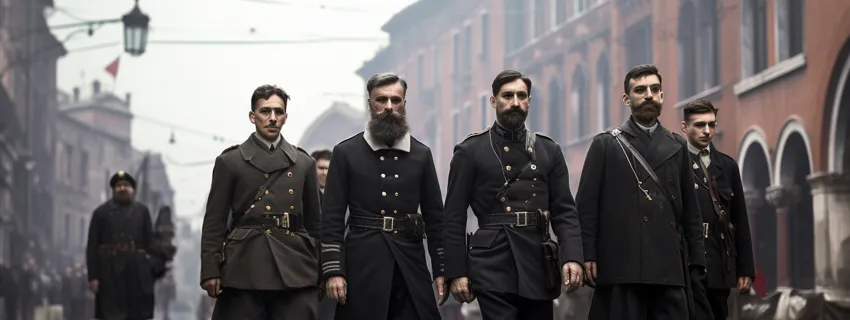
1938, the affront to fascism.
In 1938 the fascist regime started to apply the so-called ‘Racial Laws’, therefore imposing to the owner of Harry’s Bar to exhibit a sign prohibiting the admission of Jewish people.
Read more
An unacceptable request, so horrible to force Giuseppe Cipriani to face the wrath of the authorities by hanging the sign, rather than at the entrance, at the kitchen door. This was considered a great insult, especially considering the lack of irony of these people. Not surprisingly, at the beginning of the war, Harry’s Bar was seized and assigned as a mess hall for sailors.

“SERVE THE OTHERS THE SAME WAY YOU WOULD BE SERVED”
(Arrigo Cipriani)

Not just Belllini drink: the Dry Martini.
Although Harry’s Bar is world famous for its ‘Belllini’, many cocktail enthusiasts visit this place and order a ‘Dry Martini’, as Hernest Hemingway used to do. It was the American writer himself to start this tradition, enjoying particularly its most alcoholic ‘variation’, known as ‘Montgomery Martini’.
Read more
This is prepared by mixing Gin and Extra Dry Martini, in the proportion of fifteen to one. The cocktail takes its name from the British general Bernard Montgomery: it is said that, during the Second World War, he always tried to achieve the same proportion between his troops and the enemy on the battlefield.

Bellini Cocktail and Carpaccio beef: Harry’s Bar Venice jewels.
Harry’s Bar customers have the chance to taste some of the most typical Italian dishes, prepared according to the original recipes. Particularly tasty are the specialties belonging to the Venetian tradition, such as ‘fegato alla veneziana’ (Venetian style liver and onions), ‘baccalà alla vicentina’ (Vicenza-style cod) and ‘baccalà mantecato’ (creamed cod). Although this offer alone could satisfy the most refined gourmets, the real ‘jewels’ of Harry’s Bar, the specialties for which it’s worth to visit the restaurant at least once, are a drink, the ‘Bellini’, and a meat-based dish, the ‘carpaccio’. They’re both fruits of the creativity of Giuseppe Cipriani.

Harry's Bar Venice: the Bellini Cocktail.
‘Bellini’ is a cocktail prepared with white peach pulp and prosecco (*1). It was born in 1948. Its name a tribute to Giovanni Bellini (*2), Venetian painter of the fifteenth century, who was celebrated that year in an exhibit. Some speculate that a particular shade of pink, used by the artists in one of his works, reminded Giuseppe Cipriani of his specialty.

Harry's Bar Venice: the Carpaccio beef.
‘Carpaccio’ was born in 1950, because of the particular diet of Amalia Nani Mocenigo, an Italian countess to which the doctor had prohibited cooked meat. Considering this, Giuseppe Cipriani decided to cut beef fillet in very thin slices (*3), seasoning them with the ‘Universal sauce’ (*4) of his invention (*5). The dish was given the name of ‘Carpaccio’ (*6) since an exhibit about the painter of the same name was held in Venice at that time.
Notes:
*1: Some argue that it was originally made with Champagne, but this is not true, especially considering the recipe included in the book ‘L’angolo dell’Harry’s Bar’ by Giuseppe Cipriani.
The type of ‘Bellini’ made with Champagne is generally known as ‘Bellini Royal’;
*2: Also known as ‘Giambellino’;
*3: Nowadays, at Harry’s Bar, sirloin is preferred, since it’s tastier;
*4: This sauce is called ‘Universal’ because it can be used to flavor both meat and fish. It’s prepared with mayonnaise, Worcester sauce, lemon, milk, salt and white pepper;
*5: The sauce is sprinkled over the meat in such a way as to create something similar to an abstract painting, remembering the style of the famous painter Kandinskij;
*6: Vittore Carpaccio, Venetian painter (15th / 16th Century);

‘Arrigo’, the translation of ‘Harry’.
‘Arrigo’ is, in fact, the Italian translation for Harry. This hypothesis has been confirmed by Mr. Cipriani Jr. himself, who said many times, ironically, to have “the name of a bar”.
Read more
Quest’ultimo, non a caso, si chiama Arrigo, traduzione italiana di Harry. Tale ipotesi è stata confermata dall’interessato stesso, il quale sembra abbia più volte detto, ironicamente, di avere “il nome di un bar”.

“I HAVE THE NAME OF A BAR”
(Arrigo Cipriani)
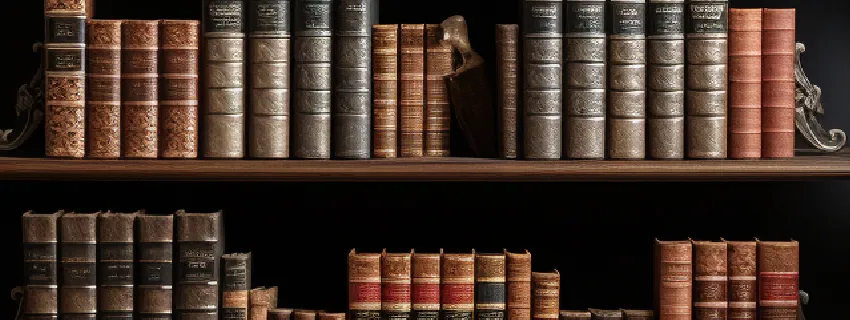
Harry’s Bar Venice in literature.
Harry’s Bar is mentioned in at least a couple of famous novels: ‘Across the River and Into the Trees’, by Hernest Hemingway, and ‘Brideshead Revisited’ by Evelyn Waugh.

Famous people at Harry’s Bar Venice.
Although Harry’s Bar guests, as such, have always been considered equal to each other and therefore worthy of the same type of care and respect, it’s undeniable that good part of the reputation of this place comes from the (many) celebrities who visited it.
This is not surprising, considering the ability of the Cipriani family to treat with simplicity and spontaneity people who are often too much at the center of attention, donating them moments of ‘precious normality’ (*1).
Click here for a brief list of some of the famous customers of Harry's Bar.

Arturo Toscanini
Toscanini is widely considered one of the greatest conductors of all time. During his career, he worked in famous theaters such as La Scala in Milan and the Metropolitan in New York. In 1939, his profound aversion to Nazi-fascism forced him to leave Europe and settle in the United States. (More)

Georges Braque
French painter and sculptor. He contributed, together with his friend Pablo Picasso, to the birth and development of the artistic current known as ‘cubism’: an innovative representation of reality, consisting in a progressive translation of images into geometric shapes. (More)

Truman Capote
Famous American author, playwright and screenwriter. In 1958 he published ‘Breakfast at Tiffany’s’: its plot was used for the famous movie by Black Edwards. The novel ‘Cold Blood’ (1966), based on a true crime story, brought Mr. Capote to the pinnacle of his success. (More)

Maria Callas
Mrs. Callas was a lyric singer of Greek origin: her vocal timbre was so unique that she was nicknamed ‘La Divina’ by opera enthusiasts. Her interpretations of Norma, by Vincenzo Bellini, and of Lucia di Lammermoor, by Gaetano Donizzetti, are still unforgettable. (More)

Orson Welles
American director, actor and screenwriter. He was just twenty-three when he became very popular thanks to his radio show ‘The War of the Worlds’: it was so realistic that millions of Americans believed they were attacked by aliens. His most famous movie is ‘Citizen Kane’ (1941). (More)

Woody Allen
American actor, director and writer. The great part of his works is characterized by a very personal style, recognizable for sharp and refined irony. It’s difficult to list all his successful movies, including ‘Play It Again, Sam’ (1972), ‘Annie Hall’ (1977) and ‘Manhattan’ (1979). (More)
 Over the years, many persons of great talent, sitting at the tables of the Bar, had and still has the rare opportunity to feel at home, without giving up the chance of having important meetings or just enjoying a few moments of relaxation.
Over the years, many persons of great talent, sitting at the tables of the Bar, had and still has the rare opportunity to feel at home, without giving up the chance of having important meetings or just enjoying a few moments of relaxation.
If the walls of ‘la stanza’ (‘the room’) (*2) could talk, they would tell a huge number of interesting stories: amorous intrigues, furious quarrels, funny anecdotes and who knows what else. Only a fraction of these stories will ever reach the public: most of them are jealously guarded by the devoted discretion of the owners of the Bar and its staff.
Notes:
*1: “True aristocracy and intelligentsia don’t know snobbery” (Arrigo Cipriani);
*2: The name that Mr. Arrigo likes to use referring to the main room of Harry’s Car;

Harry’s Bar Venice in the world.
The Cipriani’s ability to treat customers has made their fortune. Harry’s Bar philosophy has been successfully exported around the world.
Currently, the brand is present in a large number of countries, such as the United States, Mexico, Argentina, Spain, Hong Kong, Dubai, Abu Dhabi and Montecarlo.
It should be pointed out the existence of many places that, although bearing the name ‘Harry’s Bar’ and trying to imitate its formula, don’t belong to the Cipriani family.

Hemingway: a very special customer.
 During the winter between 1949 and 1950, Hernest Hemingway became a regular guest of Harry’s Bar: his visits were a pleasing routine, deeply connected to the writing of the novel ‘Across the River and into the Trees’, whose protagonist, Colonel Cantwell, is none other than his alter ego.
During the winter between 1949 and 1950, Hernest Hemingway became a regular guest of Harry’s Bar: his visits were a pleasing routine, deeply connected to the writing of the novel ‘Across the River and into the Trees’, whose protagonist, Colonel Cantwell, is none other than his alter ego.
It is said that the writer preferred a particular table: a corner table from which, while tasting a dry martini, he loved to observe the diverse people frequenting the Bar.
If it is true that Giuseppe Cipriani, as a serious professional, always tried not to establish friendships with his clients, recommending to his son Arrigo to keep a polite detachment, from this point of view, Hemingway was an exception.

Harry’s Bar Venice: contacts.
Copyright information.
The images displayed in this page belong to WebFoodCulture, with the exception of:
Public Domain images
- Nancy Reagan at Harry’s Bar, 1987, M.A. Fackelman (Wikipedia Link) {PD-US}
- Woody Allen, ‘Play it Again Sam’, 1969, image by Rabinson (Wikipedia Link) {PD-US}
- Arturo Toscanini directs ‘La forza del destino’, 1943 (Wikipedia Link) {PD-US}
- Georges Braque, 1908 (Wikipedia Link) {PD-US}
- Truman Capote, 1959, United States Library of Congress (Wikipedia Link)
- Orson Welles, 1943 (Wikipedia Link) {PD-US}

